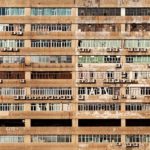كتبت هذه القصيدة بواسطة الشاعرة كارول آن دافي، تستخدم الحكاية الخيالية لامرأة تحمل خريطة محفورة على جلدها لتمثيل كيف تشكل تجارب الماضي لشخص ما، تابع القراءة عزيزي القارئ لتتعرف على المزيد.
ما هي قصيدة The Map Woman
A woman’s skin was a map of the town
.where she’d grown from a child
When she went out, she covered it up
,with a dress, with a shawl, with a hat
with mitts or a muff, with leggings, trousers
or jeans, with a an ankle-length cloak, hooded
– and fingertip-sleeved. But – birthmark, tattoo
,the A-Z street-map grew, a precise second skin
,broad if she binged, thin when she slimmed
.a précis of where to end or go back or begin
,Over her breast was the heart of the town
from the Market Square to the Picture House
by way of St Mary’s Church, a triangle
of alleys and streets and walks, her veins
like shadows below the lines of the map, the river
an artery snaking north to her neck. She knew
if you crossed the bridge at her nipple, took a left
,and a right, you would come to the graves
,the grey-haired teachers of English and History
,the soldier boys, the Mayors and Councillors
,the beloved mothers and wives, the nuns and priestsء
their bodies fading into the earth like old print
on a page. You could sit on a wooden bench
,as a wedding pair ran, ringed, from the church
,confetti skittering over the marble stones
the big bell hammering hail from the sky, and wonder
who you would marry and how and where and when
you would die: or find yourself in the coffee house
nearby, waiting for time to start, your tiny face
.trapped in the window’s bottle-thick glass like a fly
And who might you see, short-cutting through
the Grove to the Square – that line there, the edge
,of a fingernail pressed on her flesh – in the rain
leaving your empty cup, to hurry on after
calling their name? When she showered, the map
.gleamed on her skin, blue-black ink from a nib
,She knew you could scoot down Greengate Street
,huddling close to the High House, the sensible shops
,the Swan Hotel, till you came to the Picture House
sat in the musty dark watching the Beatles
run for a train or Dustin Hoffman screaming
Elaine! Elaine! Elaine! or the spacemen in 2001
;floating to Strauss. She sponged, soaped, scrubbed
,the prison and hospital stamped on her back
the park neat on her belly, her navel marking the spot
,where the empty bandstand stood, the river again
,heading south, clear as an operation scar
the war memorial facing the railway station
where trains sighed on the platforms, pining
for Glasgow, London, Liverpool. She knew
you could stand on the railway bridge, waving
goodbye to strangers who stared as you vanished
into the belching steam, tasting future time
on the tip of your tongue. She knew you could run
– the back way home – there it was on her thigh
,taking the southern road then cutting off to the left
,the big houses anchored behind their calm green lawns
,the jewels of conkers falling down at your feet
then duck and dive down Nelson and Churchill
.and Kipling and Milton Way until you were home
,She didn’t live there now. She lived down south
abroad, en route, up north, on a plane or train
,or boat, on the road, in hotels, in the back of cabs
,on the phone; but the map was under her stockings
,under her gloves, under the soft silk scarf at her throat
under her chiffon veil, a delicate braille. Her left knee
marked the grid of her own estate. When she knelt
,she felt her father’s house pressing into the bone
– heard in her head the looped soundtrack of then
,a tennis ball repeatedly thumping a wall
an ice-cream van crying and hurrying on, a snarl
of children’s shrieks from the overgrown land
where the houses ran out. The motorway groaned
just out of sight. She knew you could hitch
from Junction 13 and knew of a girl who had not
been seen since she did; had heard of a kid who’d run
across all six lanes for a dare before he was tossed
by a lorry into the air like a doll. But the motorway
was flowing away, was a roaring river of metal
.and light, cheerio, au revoir, auf wiedersehen, ciao
,She stared in the mirror as she got dressed
both arms raised over her head, the roads
for east and west running from shoulder
to wrist, the fuzz of woodland or countryside under
each arm. Only her face was clear, her fingers
smoothing in cream, her baby-blue eyes unsure
,as they looked at themselves. But her body was certain
,an inch to the mile, knew every nook and cranny
,cul-de-sac, stile, back road, high road, low road
…one-way street of her past. There it all was, back
ملخص قصيدة The Map Woman
تبدأ القصيدة بإخبار امرأة لديها خريطة للبلدة، المكان الذي نشأت فيه باعتبارها بشرتها، تدمج الشاعرة الذاكرة بالمظهر الجسدي، ممّا يشير إلى أنّ الهوية تتكون من التجارب السابقة، تتقدم القصيدة وتصف كيف تمتد الخريطة عبر جسد المرأة بالكامل، تبدأ المرأة في محاولة الهروب من الخريطة، والسفر حول العالم، وتجربة ثقافات جديدة، ومع ذلك فهي لا تستطيع حقًا الهروب من ماضيها.
الهوية التي شكلتها عندما كانت طفلة اتبعتها إلى الأبد، ممثلة في الوجود المستمر للخريطة، على الرغم من وجود لحظات إيجابية داخل القصيدة، إلا أنّ النغمة العامة كئيبة ومحبطة، في النهاية تمكنت المرأة من التخلص من جلدها، ومع ذلك حتى ذلك الحين بقيت الشوارع القديمة في أعماق عظامها، ختام القصيدة محبط تناقش الشاعرة كيف لا يمكن تغيير الهوية حقًا، إنّ حتمية الماضي مأساوية بالنسبة لخريطة المرأة التي تتوق إلى تغيير لا يأتي أبدًا.
الموضوع الرئيسي الذي تم استكشافه في القصيدة هو الهوية، تقدم الشاعرة امرأة تحتوي على هويتها في جلدها، هذا بمثابة استعارة لكيفية تأثير الأحداث على شخص ما، تشير حقيقة أنّ الخريطة على بشرتها دائمة إلى حتمية الهوية، تقترح الشاعرة المكان الذي نكبر فيه وأحداث الطفولة مهمة للغاية، تلك اللحظات المحفورة على بشرتنا إلى الأبد.
موضوع آخر تستكشفه الشاعرة في القصيدة هو الجسد الأنثوي، الخريطة الموجودة على جلد المرأة هي الفكرة المركزية، ومع ذلك فإنّ لوحة هذه الاستعارة هي الجسد الأنثوي، قد يشير الافتقار إلى التحديد فيما يتعلق بالشخصية في السطر الافتتاحي إلى أنّ هذه هي كل امرأة وتمثل جميع النساء، تستكشف الشاعرة كيف يمكن أن يؤثر المكان والزمان على النساء، والتواصل مع من هن وماذا يصبحن.









